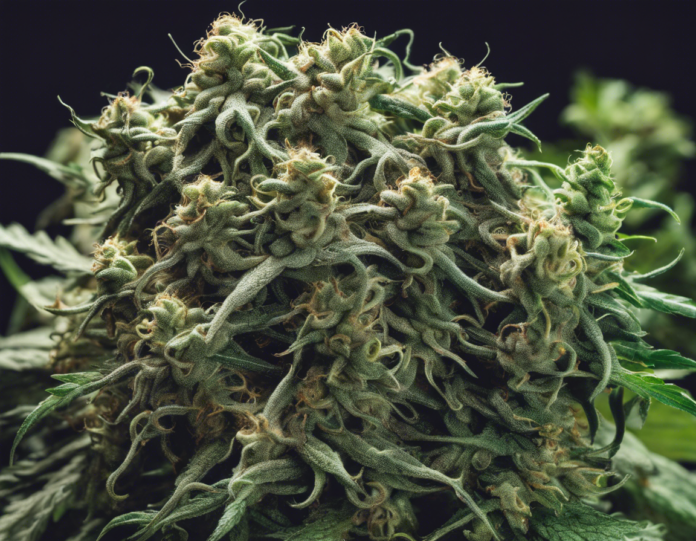In the realm of microbiology, the Medusa Strain has garnered significant attention and intrigue for its unique properties and potential applications across various scientific disciplines. This enigmatic microbial strain, named after the mythical creature Medusa due to its fascinating characteristics, has been a subject of intensive study and research in recent years. In this comprehensive article, we delve into the mysteries surrounding the Medusa Strain, exploring its origins, properties, potential uses, and the implications of its discovery in the scientific community.
The Origins of the Medusa Strain
The origins of the Medusa Strain trace back to a remote underwater volcanic vent discovered by a team of marine biologists in the depths of the Pacific Ocean. This vent, characterized by extreme temperatures and high levels of pressure, serves as a unique ecosystem where the Medusa Strain thrives. Initially identified through metagenomic sequencing techniques, this microbial organism has since been isolated and cultured for further study.
Properties of the Medusa Strain
The Medusa Strain possesses a remarkable ability to survive in hostile environments characterized by high temperatures, acidic conditions, and low oxygen levels. It exhibits a unique morphology, with tentacle-like structures that resemble the mythical creature after which it is named. These structures are composed of specialized proteins that confer resilience and adaptability to extreme conditions.
Furthermore, the Medusa Strain has been found to produce a range of bioactive compounds with potential pharmaceutical applications. These compounds display antimicrobial, anti-inflammatory, and antioxidant properties, making them promising candidates for the development of novel drugs and therapies.
Potential Applications of the Medusa Strain
The discovery of the Medusa Strain has opened up a plethora of potential applications across various fields, including biotechnology, medicine, and environmental remediation. Researchers are exploring its use in bioremediation projects to clean up oil spills and other environmental contaminants. The unique metabolic capabilities of the Medusa Strain enable it to degrade complex organic compounds effectively, making it a valuable asset in addressing environmental challenges.
In the field of medicine, the bioactive compounds produced by the Medusa Strain show promise for the treatment of antibiotic-resistant infections, chronic inflammatory conditions, and neurodegenerative disorders. By harnessing these natural compounds, scientists aim to develop new therapies that can combat the rising threat of drug-resistant pathogens and improve patient outcomes.
Implications of the Discovery
The discovery of the Medusa Strain has significant implications for our understanding of microbial diversity and adaptation to extreme environments. By studying this unique organism, scientists can gain insights into the mechanisms underlying microbial survival strategies and evolution. This knowledge may inform future research on biotechnology, ecology, and astrobiology, as the Medusa Strain provides a valuable model system for studying extremophiles and their interactions with the environment.
Frequently Asked Questions (FAQs)
1. What makes the Medusa Strain unique among microbial organisms?
The Medusa Strain stands out for its ability to thrive in extreme environments with high temperatures, acidity, and low oxygen levels. Its tentacle-like structures and production of bioactive compounds further distinguish it from conventional microbial species.
2. How was the Medusa Strain discovered?
The Medusa Strain was initially identified through metagenomic sequencing of samples collected from an underwater volcanic vent in the Pacific Ocean. Subsequent isolation and culturing allowed researchers to study its properties in more detail.
3. What are some potential applications of the Medusa Strain in biotechnology?
The Medusa Strain shows promise for use in bioremediation projects to clean up environmental contaminants. Its ability to degrade complex organic compounds could be valuable in addressing pollution and promoting environmental sustainability.
4. Can the bioactive compounds produced by the Medusa Strain be used in medicine?
Yes, the bioactive compounds produced by the Medusa Strain exhibit antimicrobial, anti-inflammatory, and antioxidant properties that make them attractive candidates for drug development. They hold potential for treating various health conditions, including antibiotic-resistant infections and inflammatory diseases.
5. How does the discovery of the Medusa Strain contribute to scientific knowledge?
The discovery of the Medusa Strain advances our understanding of microbial diversity, adaptation to extreme environments, and the potential for biotechnological applications. By studying this unique organism, scientists can expand their knowledge of evolutionary processes and biological adaptation in challenging habitats.




